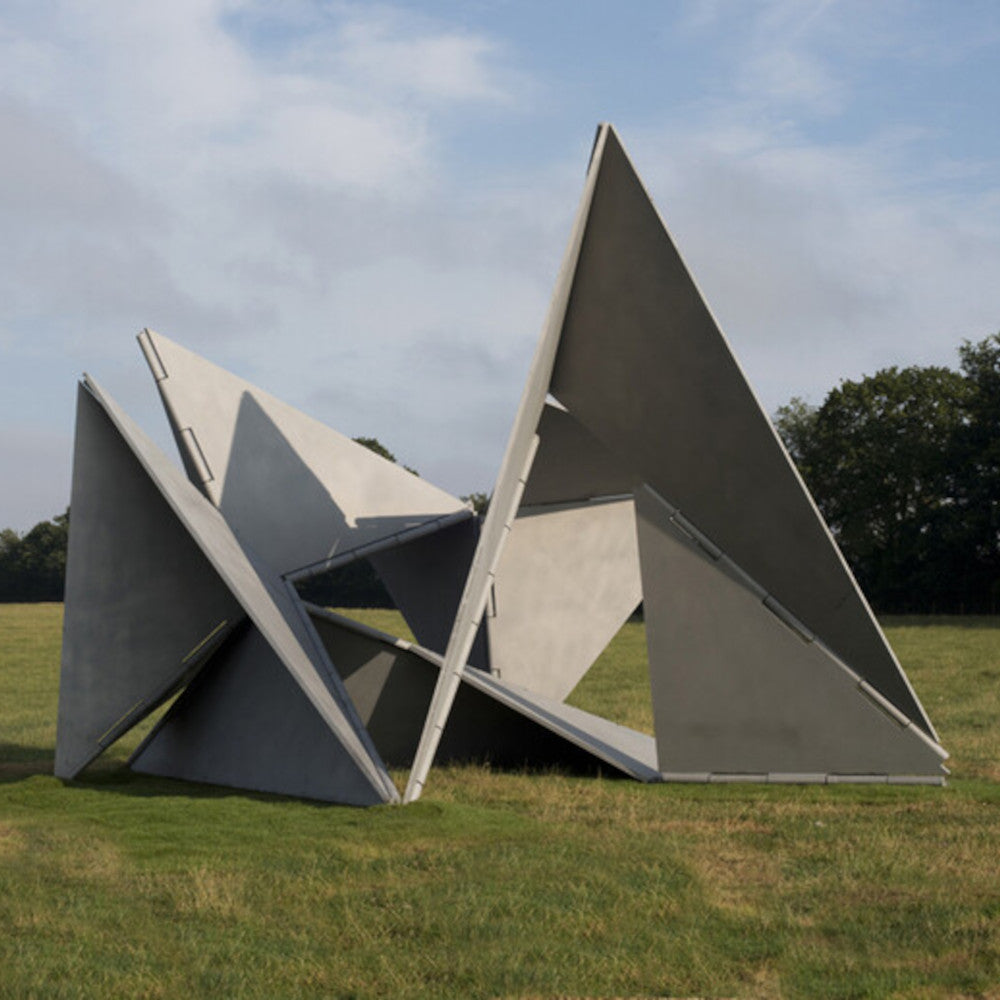
What if you could move the interior of your living space to reflect different moods and preferences? This was the vision of Brazilian artist Lygia Clark in the 1960s. She made several small models to explore the possibilities of what this might look like in architecture.
Her small building model called A Casa do Poeta from 1964:
Image via: lygiaclark.org
Fascinated by the idea of the viewer as a participant in forming space, she began creating sculptures following the same idea. Made from hinged aluminum panels, each sculpture is meant to be played with by the viewer, forming a different configuration each time it is moved.
Lygia Clark, Bicho linear, 1960, Aluminum. - via moma.org
She called the sculptures "bichos," meaning "critters," which references the organic and kinetic characteristics of the sculptures. Her series of bichos called Fantastic Architecture showed her ambitions to further the experience and create large-scale immersive sculptures that the viewer could walk through.
Unable to accomplish in her lifetime, the monumental version of Fantastic Architecture was brought to life in 2013 by the Lygia Clark estate, Alison Jacques Gallery in London, the Henry Moore Foundation, Price & Myers and MTEC.
All of the following images: Fantastic Architecture I, 1963/2013, Stainless Steel. Photography: Michael Brzezinski. via meer.com
Composed of fifteen tons of moveable steel panels, Fantastic Architecture I advances Clark's larger than life approach to form and sculpture, and lets us experience her grand vision.
.
References
Lygia Clark: Fantastic Architecture. (2014, August 25). Retrieved from https://www.meer.com/en/10811-lygia-clark-fantastic-architecture







